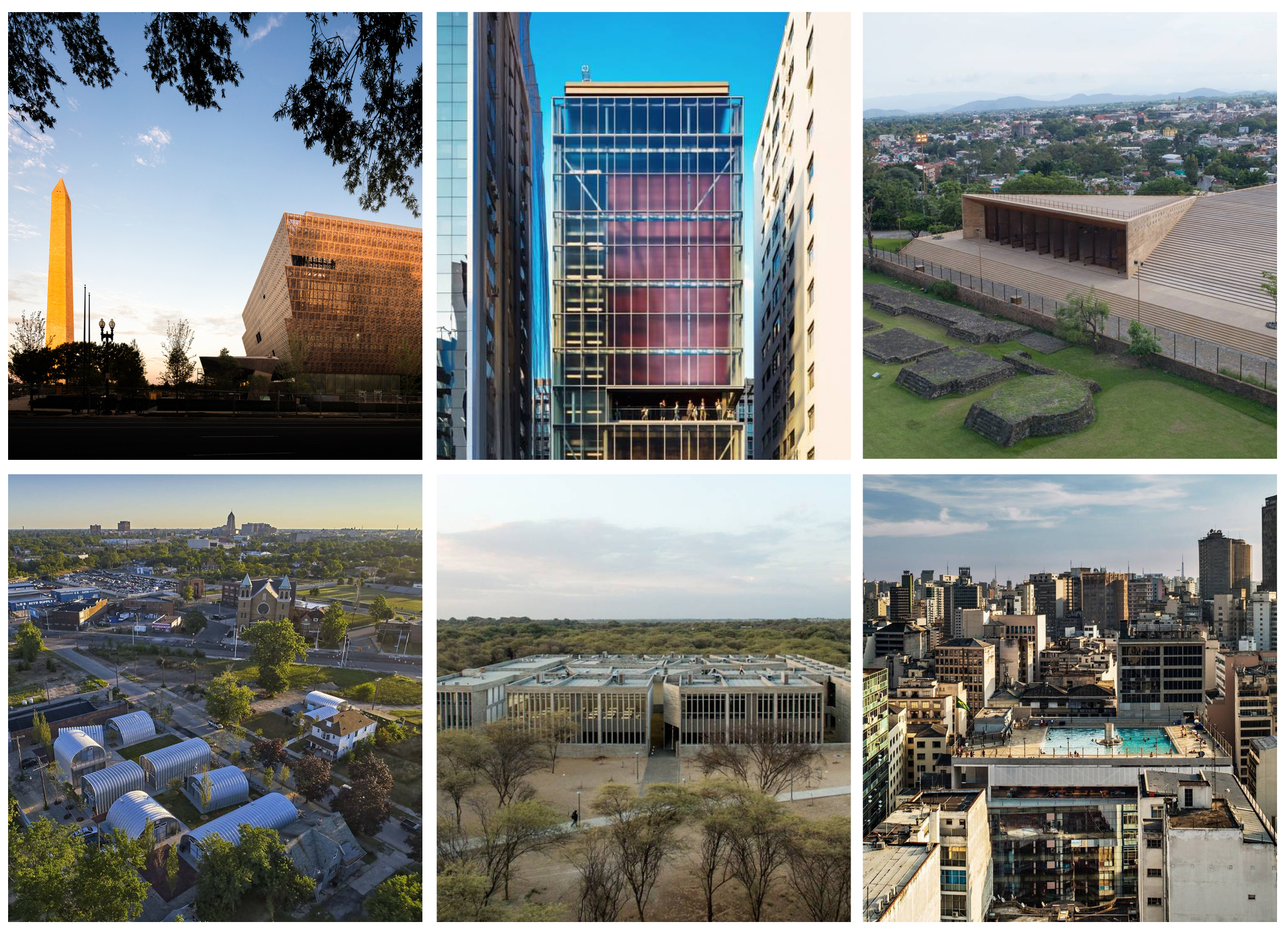Behind the Prize: Jurying the Mies Crown Hall Americas Prize
A panel discussion with members of the 2018 MCHAP jury.
June 12, 2019
7:00 p.m.

From left to right, starting at top: 1. Freelon Adjaye Bond / Smithgroup. Smithsonian National Museum of African American History and Culture, Washington D.C. Image credit: Kate Warren. 2. Andrade Morettin Arquitetos. Instituto Moreira Sales, São Paulo. Image credit: Nelson Kon. 3. PRODUCTORA + Isaac Broid. Teopanzolco Cultural Center, Cuernavaca. Image credit: Jaime Navarro Soto. 4. EC3 / Edwin Chan. True North, Detroit. Image credit: Jason Keen 5. Barclay & Crousse. Universidad de Piura - Edifício E, Piura. Image credit: Cristobal Palma. 6. Paulo Mendes da Rocha e MMBB. SESC 24 de Maio, São Paulo. Image credit: Nelson Kon.
In architectural award competitions, jurors’ observations too often fall by the wayside once a winner is announced. In this program, jury members from the most recent Mies Crown Hall Americas Prize (MCHAP) will discuss their methodology, deliberations, and decisions. The award program was founded in Chicago six years ago by the Illinois Institute of Technology (IIT) College of Architecture to honor architectural excellence in the Americas.
The discussion will focus on the jury’s selection criteria and issues ranging from regional differences to the contributions of clients in achieving excellence to the impact of award programs.
Last year, following the selection of competition finalists, the MCHAP jury traveled to examine first-hand finalists’ projects in Brazil, Peru, Mexico, and the U.S. Jurors interviewed both architects and clients to ascertain how each project addressed form and function.
The jury awarded the 2018 Americas Prize to Edificio E, a university building in northern Peru designed by Sandra Barclay and Jean Pierre Crousse of Barclay & Crousse. The other finalists were: IMS Paulista, a cultural center by Andrade Morettin Arquitetos Associados; and SESC 24 de Maio, a community center by Paulo Mendes da Rocha and MMBB Arquitetos, both in Sao Paulo; the Smithsonian National Museum of African American History and Culture by Freelon Adjaye Bond/Smith Group, Washington D.C.; Teopanzolco Cultural Center by PRODUCTORA and Isaac Broid, Cuernavaca; and True North, a housing development by Edwin Chan / EC3, Detroit.
Founded by IIT as a platform to engage students, academics, and professionals through symposia, classroom teaching and publications, the MCHAP program is based in Mies van der Rohe’s Crown Hall, itself a powerful distillation of architectural principles.
Panelists are:
Ricky Burdett, jury chair, professor of Urban Studies and director of the London School of Economics Cities and the Urban Age Programme. Burdett curated the Venice Biennale in 2006, was Chief Advisor on Architecture and Urbanism to the City of London for the 2012 Olympics, and was named a Commander of the Order of the British Empire in 2017.
Jose Castillo, founding principal of Arquitectura 911sc in Mexico City and lecturer at the Harvard Graduate School of Design, whose work has been recognized with Mexico’s National Housing Award, among other honors.
Dirk Denison, Director of the Mies Crown Hall Americas Prize, Professor in the College of Architecture at Illinois Institute of Technology for over 30 years and founding principal of Dirk Denison Architects. A book on his work, Dirk Denison 10 Houses, was published in December 2018.
Claire Weisz, founding principal of WXY, a New York-based multidisciplinary practice focused on re-imagining the interface between architecture, urban design and infrastructure, who recently received AIA New York’s Medal of Honor. Weisz is a board member of the Architectural League, a Fellow of the AIA, and a co-founder of the Design Trust for Public Space.
Explore
March 2, 2017
Emerging Voices lectures: BLDGS & Taller de Arquitectura
The first evening of the annual Emerging Voices lecture series features Brian Bell and David Yocum of BLDGS; and Frida Escobedo of Frida Escobedo, Taller de Arquitectura.
LANZA Atelier
Mexico City's Isabel Abascal and Alessandro Arienzo practice as LANZA Atelier.
Climate change in the American mind
Anthony Leiserowitz is joined in conversation by Kate Orff, Paul Lewis, and Dale Jamieson to discuss underlying values that are reflected in our various views of climate change, and the extent to which those views are based on cultural predispositions rather than scientific data.
